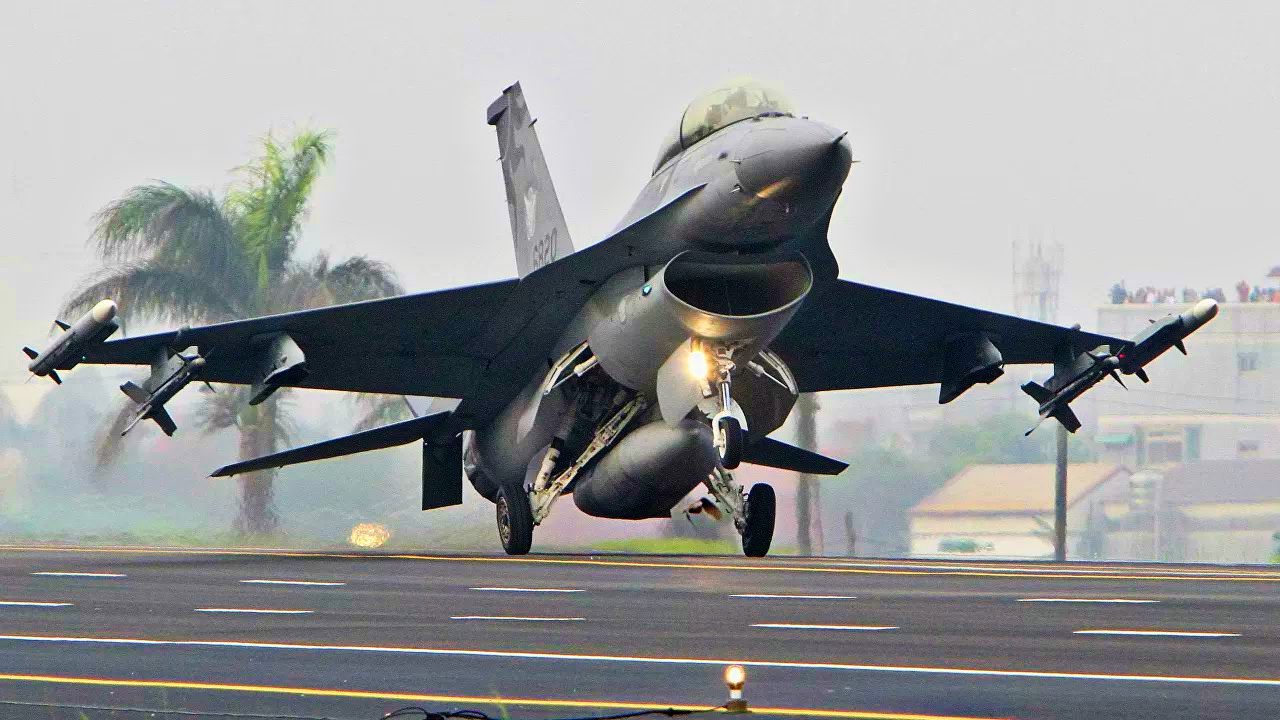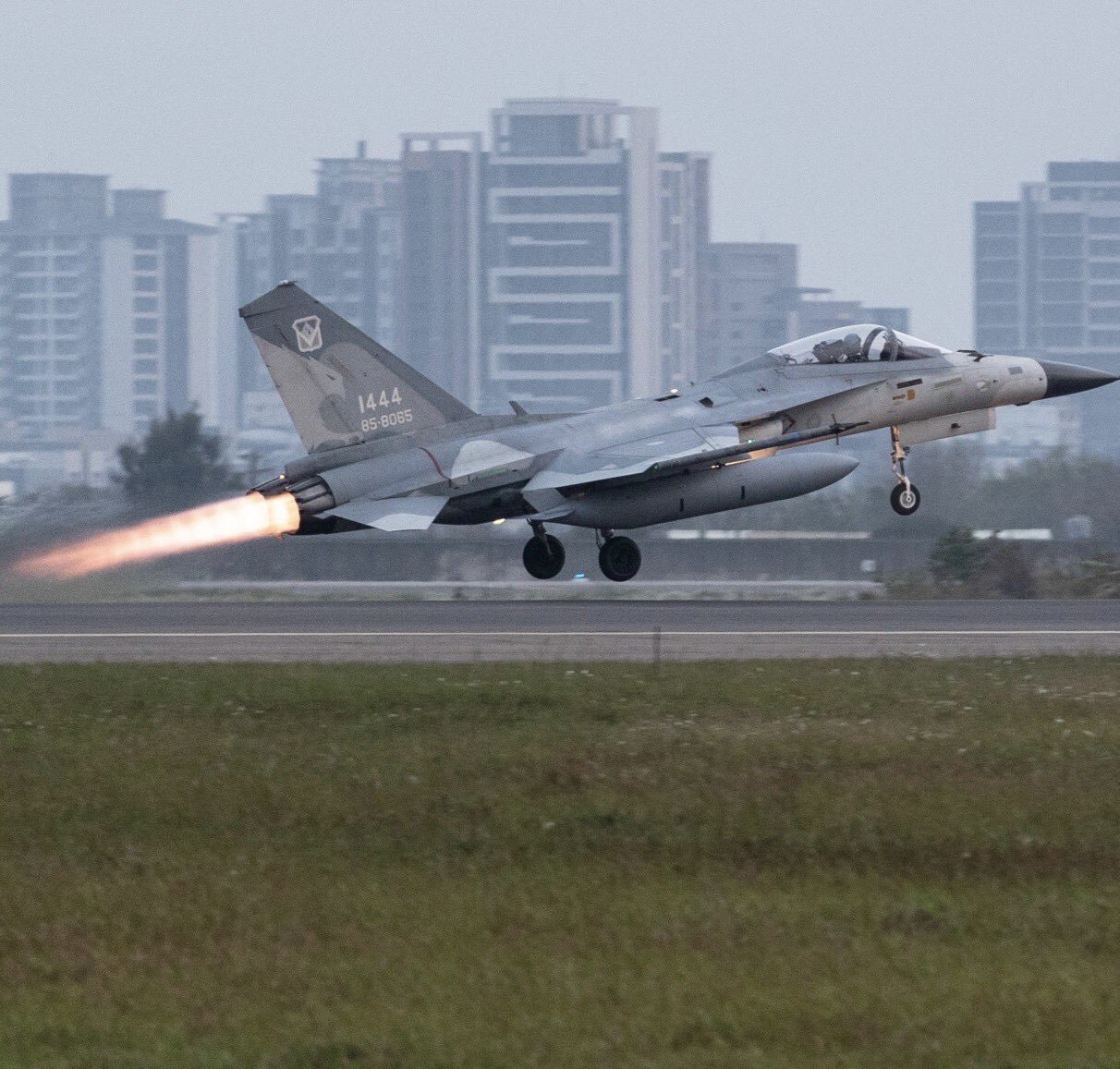Taiwan has concluded military exercises involving its air force and navy to improve their ability to conduct “joint combat operations” and set the stage for the even larger Han Kuang military drills later this year.
According to reports, F-16Vs, Mirage 2000-5s, the domestically made F-CK-1 Ching Kuo Indigenous Defense Fighter (IDF), the P-3C submarine-hunting aircraft, and the Navy’s S-70C anti-submarine helicopters and drones participated from military bases around the country participated in the joint combat operations drills.
However, information on the naval units participating in the exercise was not mentioned.
In addition, a seminar was organized at the Hualien air base in eastern Taiwan with the participation of instructor pilots who teach air combat on F-16Vs, Mirage 2000-Vs, and IDF pilots.
Chinese defense bloggers on Weibo claimed that US instructors are likely to be unofficially present on the ground in Taiwan to give inputs to Taiwanese pilots and are likely to have participated in the seminar. This information, however, could not be independently verified.
Taiwanese Mirage 2000s & IDF Fighters Practice Interception In Pairs
Taipei Times also specifically claimed that the Chinese military aircraft and warships’ regular breaching of Taiwan’s Air Defense Identification Zone (ADIZ) and sailing near Taiwan’s waters had been a major trigger behind the current drills.
The air force’s “combined” operations with the navy mean Taiwan’s military primarily practices how fighter bombers and warships can coordinate and jointly attack enemy warships and fleets. Target Identification, tracking, and engagement of different air and sea targets could be tactfully distributed between the fighters and Taiwanese warships and is a matter of tactics.
Day2 of #JointOpsDrill. #MP put their strike force and their CM34 IFV to test at night, while #ROCAF Mirage and IDF jets scrambled to simulate intercept with SAM version TC-1 missiles at daybreak. #ROCArmedForces train in realistic scenarios to defend ourselves better. pic.twitter.com/V10x6v8Bi9
— 國防部 Ministry of National Defense, R.O.C. ?? (@MoNDefense) March 21, 2023
A tweet from the Republic of China (ROC) Ministry of National Defense (MND) about the exercise said their Mirage and IDF jets “scrambled to intercept with SAM version of the TC-1 missile at daybreak.”
The TC-1 (Sky Sword) is a short-range infrared-guided air-to-air missile (AAM), and its “SAM version” is the Antelope air defense system. Converted into a surface-to-air missile, as is standard military practice with many anti-aircraft munitions, it also has a navalized variant called the Sea Oryx.
But “intercepting with the TC-1” SAM could only mean that the missile must have been used as a simulated incoming target, and the Mirages and IDF taking off to shoot it down.
The two planes appear to be a tactical pair, coordinating and shooting down aerial targets by combining their strengths in radar detection, speed, maneuverability, and payload. Whether Taiwan has pilotless target drones or other unmanned aerial vehicles (UAVs) to simulate air intrusions is unclear.
Taiwan Can Only Defend, Not Attack
China’s flights into its ADIZ also continued on the day of the exercises. According to the MND, nine People’s Liberation Army Air Force (PLAAF) aircraft and four PLAN vessels were detected by 6 am on Wednesday in the southwestern ADIZ. It later identified two of these aircraft as a BZK-005 UAV and Y-8 anti-submarine warfare (ASW) plane.
But Taiwan’s ability to mount a large offensive, given its meager resources or conduct an indefinite fortress-like defense, is far from possible, considering its tiny landmass and lack of ‘strategic depth.’
Currently, the ROC Navy has a surface fleet composed of four Kee Lung-class destroyers (formerly American Kidd-class), ten Cheng Kung-class frigates (eight licensed ships based on the American Oliver Hazard Perry-class, two ships acquired from the United States), six Kang Ding-class frigates (French-built La Fayette-class), and six Chi Yang-class frigates (formerly American Knox-class). Most of the ships were commissioned between the 1990s and the early 2000s.

Its plan to build a missile frigate hit “roadblocks,” according to an April 2022 report in Naval News, because the National Chung-Shan Institute of Science and Technology (NCSIST) was unable to develop a compact Active Electronically Scanned Array (AESA) radar for the vessel.
Its Tuo Chiang missile corvettes, too, are mainly incapable of fending off a massive PLAN flotilla since they do not have onboard radar and sensors and would depend on other warships like the US-origin Oliver Hazard Perry-class frigates for targeted information. The numerical inferiority of the ROC Navy also makes it less capable of lasting in a complex and saturated anti-access/area-denial (A2/AD) environment.
An earlier EurAsian Times analysis had concluded how this state of affairs is likely to relegate the ROCN and ROCAF to mostly coastal and airspace defense roles, which the PLA’s numerical and qualitative advantage will eventually break through.
Moreover, Chinese pilots get “twice as much” flying time as US Air Force pilots, according to retired Lt Gen (LTG) David Deptula, who is the dean of the Mitchell Institute of Aerospace Studies (MIAS). Chinese defense affairs commentator Zhao DuShai posted a clip of Deptula making the statement at a MIAS seminar.
If Chinese pilots can match US pilots in the level of training, they are certainly ahead of their Taiwanese counterparts. But Taiwanese pilots being unable to clock the number of flying hours has another set of geographic, geo-economic, and commercial reasons.

China’s Strategy – Increase Wear & Tear of Taiwan’s Military Equipment
Zhao hinted towards a far more sinister PLA strategy of “peacetime attrition.” Here it “takes away the enemy’s training time and forces them to undertake useless interceptions. Taiwan’s limited airframes are being degraded as we speak.”
An article by Washington DC-based Chinese military expert Ben Lewis in the Council on Foreign Relations (CFR) in February this year also hinted towards this tactic.

Differentiating between ADIZ violations as “routine,” “assertive,” and “reactionary,” Lewis said all “are meant to keep consistent pressure on Taiwan’s armed forces…intensify the strain on the military resources (and) negatively impact its (operational) readiness.”
At a broader level, the absence of a large landmass or a large population (or strategic depth) prevents Taiwan and Ukraine from having defense industries deep and far away from enemy weapons ranges, and they lack the manpower to sustain massive and prolonged strategic-level combat.
And defense industrial policies that do not foster homegrown development of major weapons keep Taiwan’s air force dependent on US and France for spares for its F-16s and Mirages.
Airframe degradation, pointed out by Zhao, can be addressed by a domestic military-industrial complex that can keep churning out aerospace components and aircraft.
But again, there is the tyranny of a small geographical space to house such large-scale capital industries, except for smaller niche electronics like semiconductors.
Chinese defense commentators seem to allude to these issues when commenting on Taiwan’s military aviation accidents. Song Zhongping, a leading Chinese military analyst, commented regarding the January 2022 and March 2022 crashes of a ROCAF F-16V and Mirage 2000-5 in the Global Times.
“The accidents expose Taiwan’s lack of competence and second-class weapons bought from external forces,” Zhongping said.
- The author can be reached at satamp@gmail.com
- Follow EurAsian Times on Google News




